Next thing is to think about which functions a toggle can have:......................
Toggles; only a small part of seakayaks. Nevertheless, toggles can be handy or can have a safety-impact.
There are quite a lot of ways toggles are attached to seakayaks. Not all of them are sufficient to my opinion, but let's take a look at an anthology of toggles first:
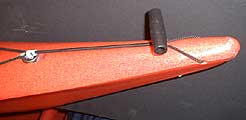
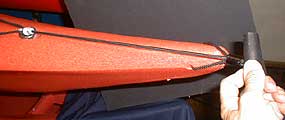
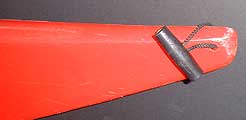
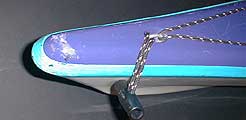
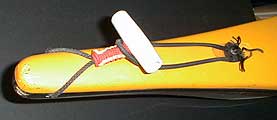
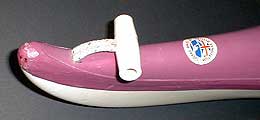
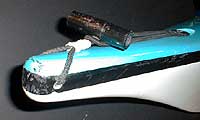
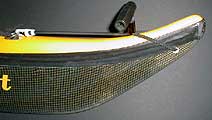
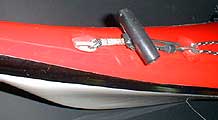
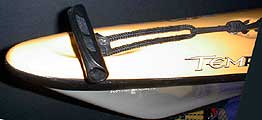
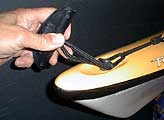
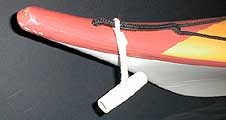
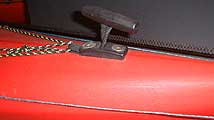
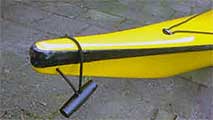
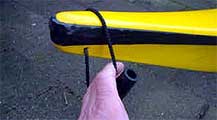
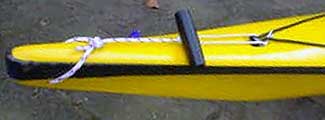
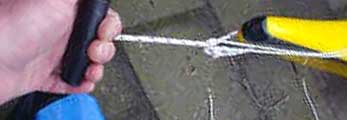
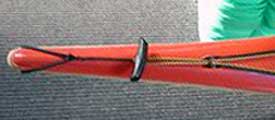
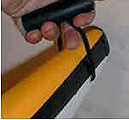
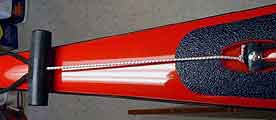
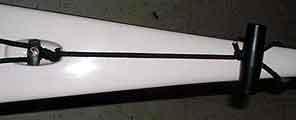

Next thing is to think about which functions a toggle can have:
- toggles make carrying a (loaded) seakayak much easier and safer (less chance of droppng it) than without them.
- when floating, after a wet exit from the kayak, the safest way to keep connected to you kayak is to grab a toggle. Especially in surf-conditions, where the kayak could twist and turn around in your hands, this is the safest method making it possible to follow your kayak like a tail. This makes the risk, you have to let go your kayak, smaller making it thus safer by keeping your kayak as floating-device at hand.
- A toggle on your own kayak can be offered to a swimmer to hold on to. (He can grab the grabline first of course, but while holding the toggle he or she influences your stability the least.
Nowadays there are 2 types of toggles I know of:
- the round toggle
- A profiled toggle; being somewhat bigger but is more pleasant for your hands.
Looking at the technical side of the toggle I found that there are 2(3) basic methods in which toggles are connected to the kayak.
a- with a rope-loop throug a hole in bow and stern
b- with a rope loop through a deck-fitting.
c- in the pictures above you can also find some miscellaneous methods I would not advise.
Ad.a) To my humble opnion this is the strongest connection making it able to lift a fully loaded kayak without damage. The hole however must be constructed in a skilled way to prevent leakage there.
Ad.b) This connection, although easier to produce for the builder, offers great risk that the deckfittng will break from the deck when lifting a loaded kayak. This has happened regularly with the connection as NorthShore makes on there kayaks.
Ad.c) These methods are not advised as ropes are glassed into the deck, making it difficult to repair or replace the rope.
Pimping your toggle
Looking at a) or b), the toggle connection can be improved for both methods. You can thus prevent the toggle rattling against the kayakhull and by changing the double rope-loop you can prevent putting a finger in the loop while drifting in surf as described above risking to entangle your finger when the kayak twists; which is probably a big risk for severe damage of the finger.
To prevent these downsides of the toggle it is promoted in Holland to improve this yourself. Looking at the anthology on top of this page you see quite a lot of different improvals; mostly using elastics (bungies) and ways to prevent the double rope-loop.
Advises for pimping
One of the two systems, described underneath. are advised:
1) connecting the toggle with a single rope to the bow or stern and attach it with a bungie to the deck
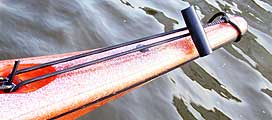
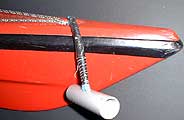
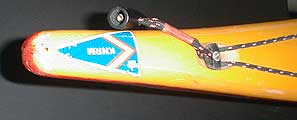
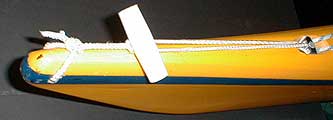
b) When you grip the toggle it should be possible to extend it for approximately 10-15cm beyond bow or stern.
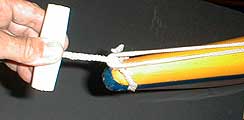
c) When you attach the toggle with a single toggle rope to bow or stern, make sure you use the smallest possible loop while making the knot. (see pictures above)
2) feed the single toggle rope through a hole in bow or stern and attach the other end of the rope directly to the bungie.

a) Make sure that it should be possible to extend the toggle for approximately 10-15cm beyond bow or stern.
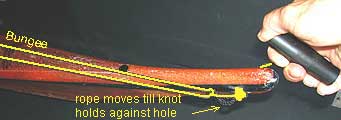
May be the ideas, as described, give you some inspiration for the way you can improve your own toggles.
Whatever way you choose to pimp your toggle, it is advised to make the toggle rope single to prevent, completely and always, that you can put a finger in it, whatever way.
Another hint is: if you have the choice, choose the place where the toggle is connected to the kayak as close to the end of bow and stern as possible!!!
